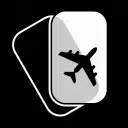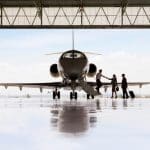Business Jet Pilots: Why Time in Type Matters to Air Charter Safety
If there’s one thing that can offer reassurance when you board a business jet, it’s knowing there’s an experienced Pilot in Command in the cockpit waiting to whisk you away to your destination. And while their years of experience and total time flying is an indicator of overall proficiency, a more appropriate statistic to consider is ‘Time in Type.’
The key to this term is the pilot’s tangible experience flying a specific type of aircraft. It’s directly related to the experience the pilot has with the particulars of that particular make and model, including its:
- Cockpit layout
- V Speeds (more on this in a bit)
- Takeoff, stopping and maneuvering capabilities
Time in Type is an indicator of experience a pilot has with that particular plane. The more experience they have, the better able the pilot will be to:
- Manage the aircraft in the event of an emergency
- Plan a flight to maximize the range of the aircraft
- Build in an expanded margin of safety
FAA Type Rating Requirements for a Business Jet

Photo by Adam Johnson via Unsplash.com
According to FAA regulations, certain makes and models of aircraft are designated with a type rating. This is usually based on the weight of the aircraft at takeoff, as well as the engine type. For example, a business jet powered by one or more turbofan engines requires a type rating.
In order to fly a type-rated aircraft, pilots must undergo additional training on top of their aircraft class training to become certified to fly that model. This includes:
- Training with a Certified Flight Instructor at an approved flight school
- Logging specific aeronautical experience
- Passing a three-part test (written, oral and practical)
That’s why it’s important to consider more than a pilot’s total flying time. A pilot might have 15,000 hours of overall flying experience, but if they aren’t familiar with a specific type of aircraft—even if it’s within the same class that they normally fly—they might not be used to the:
- Layout
- Avionics system
- Handling characteristics
Understanding V Speeds
V Speeds are a set of specific speeds determined by the manufacturer that specify how the aircraft will operate while flying at, above or within these ranges. A few common ones include:
Vr: The speed required to get an aircraft airborne safely
Vs: The minimum speed at which an aircraft is controllable (stall speed)
Va: The aircraft’s design maneuvering speed
Following V Speeds is considered a best practice and is a critical aspect of maximizing air charter safety. Using them effectively also enables pilots to fly aircraft for maximum performance.
To learn more about safety in the private aviation industry, check out our post: How Proactive Is Your Jet Charter Company about Safety?
If you’re looking for a jet charter company that’s committed to air charter safety, call Stratos Jets. We provide third-party safety audits on every business jet we charter to ensure the widest margin of safety possible—(888) 593-9066 (toll free) or request a quote online.
Feature image by Epicurrence via Unsplash.com.
Are you ready to book your Miami to Aspen charter flight yet?
Our friendly, expert air charter agents are here to answer questions or start your quote today. Don`t wait, call now and we'll get you on your way to your destination!
Call 888-593-9066











